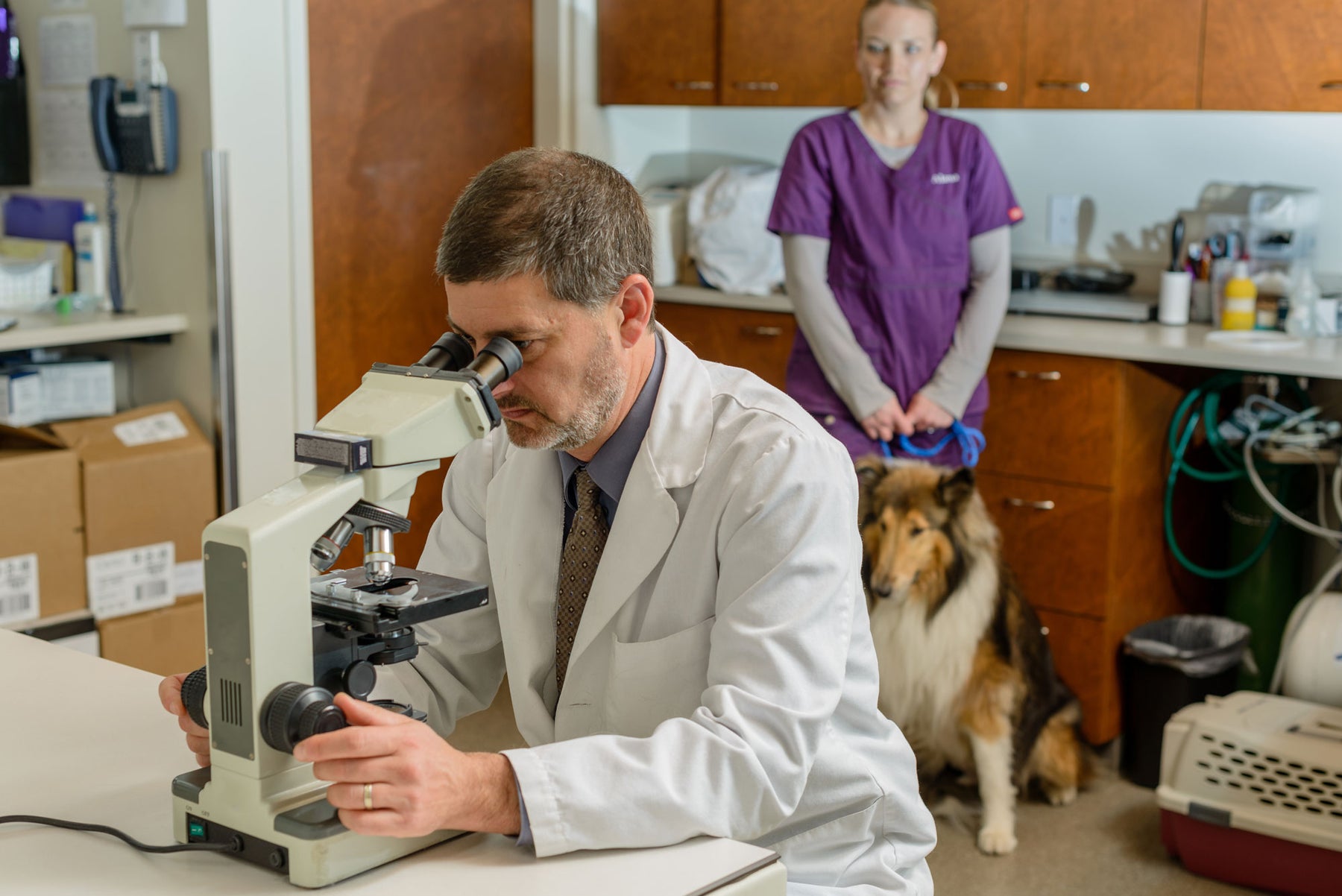
What Is the Best Microscope for a Vet
If you are a veterinarian, knowing the best biological microscope to use can get you an accurate diagnosis for your patients.
Many people think that the veterinarian's job involves the simple diagnosis and curing of animal diseases. What they do not know is the process involved in making an accurate diagnosis. For vets to treat animals correctly, a proper diagnosis is a must, which they can do with the help of a microscope.
Although vets can perform procedures by listening to an animal's heartbeat, assisting animals in labour, or treating injuries, they also have to assess their patients at a microscopic level.
Uses of a Biological Microscope in a Veterinary Practice
There are animal diseases and illnesses that you can diagnose accurately with the help of a biological microscope. It includes ear infections, parasite infestations, and skin problems.
For example, you can tell that a dog suffers from parasite infestations with signs and symptoms, such as vomiting, diarrhea, and weight loss; however, you cannot pinpoint exactly what parasite has infected the dog.
To provide the proper treatment, identify what kind of parasite is living inside the dog's intestine. To do so, a faecal flotation test is needed, which will require a veterinary microscope that will give you a clear view of the parasite.
It does not end there, lots of practice to identify the different kinds of parasite eggs is also needed. Some parasites look almost the same, such as the roundworms in horses and strongyles.
Because of this, you need to get your hands to the best biological microscope you can have. Without it, you will risk the health of your patients. It may lead to wrong diagnoses and prescriptions, which can make patients' conditions worse.
How to Choose the Best Biological Microscope for Your Vet Hospital
Even though microscopes are essential in veterinary practice, many refuse to use them. Because of the new emerging diseases and the changing demands in veterinary medicine, it is crucial to have all the right tools. One of them is a biological microscope.
Buying a microscope nowadays is easier than ever. Almost all microscopes available nowadays have competitive features when it comes to optical quality providing practitioners like you with a wide array of choices.
However, it is not an excuse to pick just anything in a store. It is crucial to know the exact features you need. Here is the essential guide on finding the best biological microscope for vets.
Number of Microscopes to Own
It is advisable to own two microscopes. Use the cheaper Faecal Worm Egg Counting Microscope for fecal flotation tests and a more advanced Veterinary Microscope the more sophisticated one for cytological studies. The solutions used for conducting fecal flotation tests can destroy the microscope over time.

Faecal Worm Egg Counting Kit & Microscope
Type of Microscope
Choose the biological compound microscope. It comprises lenses that help form an image.
Microscope Head
This part of the microscope houses the oculars. It can be inclined or straight. It is also available as trinocular, binocular, and monocular.
If you will be using the microscope yourself, the one with a binocular head is advisable for comfortable viewing.
Trinocular with a digital camera is also an excellent choice if you have a student or should you want to show your customer the specimen on a computer monitor.

Objectives
The objectives are the reasons you can see your small specimen at the microscopic level. There are usually three to four objectives attached to the microscope’s nosepiece. They contain the lenses that are crucial to view your samples at different magnifications.
For this reason, choosing the right objectives is one of the most important factors to consider if you want to buy the best biological microscope for your career. Choice among the three types of objectives: achromatic, semi-plan and infinity plan.
Many vets are now using our NEW 100X Semi Plan DRY Objective - NEVER use oil again you can read more about this new objective on our recent blog post.
The achromats are the common types of objectives, and the others are for more thorough research.

100X DRY Objective - NEVER Use OIL Again
If you want to use achromatic objectives, choose the high-quality ones. They alone can already provide excellent results. Plan Achromatic is the type of achromat objectives that are useful in photomicrography.
In buying a microscope, make sure to purchase the ones with objective powers of 4X for scanning, 10X, 40X for high/dry, and 100X for oil immersion.
Conclusion
The most challenging part of being a veterinarian is you have to be observant with your patients. Animals can't talk. They can only show their pain through behaviour and gestures.
Although you can notice something is wrong with your patients, such as changes in the heartbeat or behaviour, it cannot provide a clear view of the underlying issues. Only by having special equipment, such as a microscope, can you give precise details on your patient's problem.
Therefore, as a veterinarian, knowing the best biological microscope to buy can help you achieve more accurate diagnoses.
